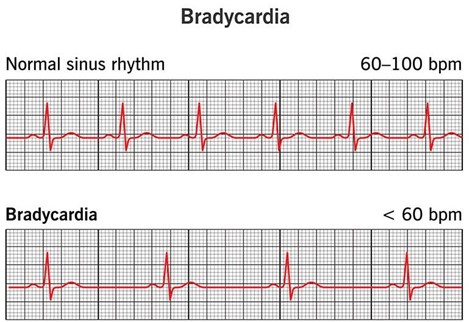A nurse finds a client who has type 1 diabetes mellitus lying in bed, sweating, tachycardic, and reporting feeling lightheaded and shaky. Which of the following complications should the nurse suspect?
Ketoacidosis
Hyperglycemia
Hypoglycemia
Nephropathy
The Correct Answer is C
Choice A: Ketoacidosis. This is incorrect because ketoacidosis is a complication of hyperglycemia, not hypoglycemia. Ketoacidosis occurs when the body breaks down fat for energy due to insufficient insulin, resulting in the accumulation of ketones and acids in the blood. Ketoacidosis can cause symptoms such as nausea, vomiting, abdominal pain, fruity breath odor, deep and rapid breathing, and altered mental status.
Choice B: Hyperglycemia. This is incorrect because hyperglycemia is a condition of high blood glucose, not low blood glucose. Hyperglycemia can occur due to insufficient insulin, excessive carbohydrate intake, infection, stress, or illness. Hyperglycemia can cause symptoms such as polyuria, polydipsia, polyphagia, blurred vision, fatigue, and headache.
Choice C: Hypoglycemia. This is correct because hypoglycemia is a condition of low blood glucose, which can occur due to excessive insulin, inadequate carbohydrate intake, exercise, alcohol consumption, or medication interactions. Hypoglycemia can cause symptoms such as sweating, tachycardia, palpitations, tremors, hunger, anxiety, confusion, dizziness, weakness, and seizures.
Choice D: Nephropathy. This is incorrect because nephropathy is a complication of chronic hyperglycemia, not acute hypoglycemia. Nephropathy is a kidney disease that results from damage to the small blood vessels and glomeruli in the kidneys due to high blood glucose levels. Nephropathy can cause symptoms such as proteinuria, edema, hypertension, and renal failure.
Nursing Test Bank
Naxlex Comprehensive Predictor Exams
Related Questions
Correct Answer is B
Explanation
Choice A: Blurred vision is not a typical finding of hypothyroidism. It can be caused by other conditions, such as diabetes, glaucoma, or eye strain.
Choice B: Bradycardia is a slow heart rate, usually below 60 beats per minute. This is a common finding of hypothyroidism, as the thyroid hormone regulates the metabolic rate and affects the cardiovascular system. Low levels of thyroid hormone can cause the heart to beat slower and weaker.
Choice C: Insomnia is difficulty falling or staying asleep. This is not a common finding of hypothyroidism, as low thyroid hormone levels can cause fatigue, lethargy, and excessive sleepiness.
Choice D: Moist skin is not a common finding of hypothyroidism, as low thyroid hormone levels can cause dry skin, hair loss, and britle nails. Moist skin can be a sign of hyperthyroidism, which is the opposite condition of hypothyroidism.

Correct Answer is C
Explanation
Choice A: Thyroxine (T4) level. This is incorrect because T4 is one of the thyroid hormones that is increased in hyperthyroidism. T4 is produced by the thyroid gland and converted to T3 in the tissues. A high level of T4 indicates overactivity of the thyroid gland.1
Choice B: Triiodothyronine (T3) level. This is incorrect because T3 is another thyroid hormone that is increased in hyperthyroidism. T3 is the more active form of thyroid hormone and regulates the metabolism of cells. A high level of T3 indicates overactivity of the thyroid gland.1
Choice C: Thyroid stimulating hormone (TSH) level. This is correct because TSH is a hormone that stimulates the thyroid gland to produce T4 and T3. TSH is produced by the pituitary gland and regulated by a feedback mechanism. When the levels of T4 and T3 are high, the pituitary gland reduces the secretion of TSH to inhibit further production of thyroid hormones. Therefore, a low level of TSH indicates hyperthyroidism.1
Choice D: Glucose level. This is incorrect because glucose level is not directly related to thyroid function. However, hyperthyroidism can affect glucose metabolism and cause increased blood sugar levels due to increased breakdown of glycogen and glucose uptake by cells. Therefore, glucose level may be elevated in some cases of hyperthyroidism, but it is not a specific indicator.

Whether you are a student looking to ace your exams or a practicing nurse seeking to enhance your expertise , our nursing education contents will empower you with the confidence and competence to make a difference in the lives of patients and become a respected leader in the healthcare field.
Visit Naxlex, invest in your future and unlock endless possibilities with our unparalleled nursing education contents today
Report Wrong Answer on the Current Question
Do you disagree with the answer? If yes, what is your expected answer? Explain.
Kindly be descriptive with the issue you are facing.
